1. White papers, articles, etc.
1.1. Vision Critical's "Do better for your customers: 5 business lessons from patient communities"
1.1.1. How the Cleveland Clinic uses its patient insight community to talk to stakeholders about topics that affect them
1.2. Bridgespan's "From Input to Ownership"
1.2.1. How nonprofits can engage with the people they serve to carry out their missions
1.3. CNS Foundation's "What is a Citizen Scientist" post
1.3.1. About the public's role in scientific advancement
1.3.2. CNS Foundation encourages our community to become citizen scientists through the Pediatric Brain Mapping Project and help identify the millions of children worldwide with pediatric neurological conditions.
1.4. David Allen's "The Threefold Nature of Work"
1.4.1. You have a choice of doing three very different things when you work – pre-defined work, ad hoc work, and defining your work.
2. Tools for gathering input from constituents.
2.1. SurveyMonkey online survey software
2.2. Survey design best practices guide from SurveyMonkey
2.3. Harwood Institute's Turn Quiz
2.3.1. Is your organization focused inwardly or outwardly?
2.3.2. The Turn Quiz helps you think about what it looks like to Turn Outward.
3. List of 134 common types of organizational projects. (Source: Taproot Foundation)
4. Books
4.1. The Power of Pull
4.2. Forces for Good
4.3. Managing to Change the World
5. INSIDE-OUTSIDERS
5.1. Inside-outsiders are would-be workers /service providers who have a personal stake in how well or poorly our kids fare. While they don't currently work in or for our organizations, they may be familiar with them. They're part of the neurological disorders "community."
5.1.1. Here I'm thinking almost exclusively of parents and family members of kids with CP or other brain disorders or conditions. There are 14-18 million such kids in the US.
6. OUTSIDE-OUTSIDERS
6.1. I define outside-outsiders as organizations or individuals who may be willing and able to take on outsourced work from organizations in the CP arena, but who don't have any prior commitment or connection to it.
6.1.1. Pro bono professionals
6.1.2. Freelancers
6.1.2.1. Virtual assistants
6.1.2.2. Gig / small service workers
6.1.3. Students /academics
7. On the subject of delegating
7.1. roughly 3-minute video introducing some interesting work done by Julian Birkenshaw (London School of Economics) and Jordan Cohen (PA Consulting) about effectively addressing “the work that matters.”
7.2. this Bridgespan piece about The Management Center's work on how to delegate successfully.
8. Human-centered design basics
8.1. IDEO's Human-Centered Design Toolkit
9. A possible “engine” for turning outsiders into insiders.
9.1. What is it more specifically? A vehicle for publicizing organizations' requests for help.
10. Thought Leaders
10.1. Groups /orgs
10.1.1. Nonprofit consultants
10.1.1.1. Bridgespan Group
10.1.1.1.1. Knowledge Letter
10.1.1.2. FSG
10.1.1.2.1. eNewsletter
10.1.1.3. The Management Center
10.1.1.3.1. The Management Fix
10.1.1.4. TCC Group
10.1.1.4.1. E-News
10.1.2. Other
10.1.2.1. Grassroots.org
10.1.2.1.1. Mission
10.1.2.1.2. Free technology tools
10.1.2.2. Stanford Social Innovation Review
10.1.2.2.1. award-winning magazine covering best strategies for nonprofits, foundations, and socially responsible businesses.
10.2. Individuals
10.2.1. Mark McDonald
10.2.1.1. Now with Accenture. Co-author of The Social Organization.
10.2.1.2. Digital Business Blog
10.2.2. Clay Shirky
10.2.2.1. writes and teaches about the social and economic effects of Internet technologies
10.2.2.2. 2010 TED talk re: cognitive surplus
10.2.3. David Allen
10.2.3.1. Personal productivity guru. Author of Getting Things Done.
10.2.3.2. GTD Times: the official blog for the David Allen Company
